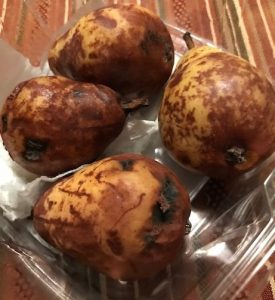Greetings, Conscientious Food Consumers!
Only two weeks until our first Pandemic Thanksgiving! It’s time to “talk turkey” (even for vegans and vegetarians) about less wasted food.
Imagine sitting at bountiful Thanksgiving dinner table. You’ve just filled your plate with an appetizing assortment of your favorite dishes. Suddenly, someone comes over and scoops up a quarter of what’s on your plate, takes it over to the compost bin and dumps it.
Shocking, right? But it’s a good metaphor for how the average American family wastes at least 25 percent of its food purchases every year, at a cost of $1,600! What’s also wasted are the Earth’s precious resources — water, energy and soil — as well as the human labor that went into that food.
But we’re all about changing that. Right, Conscientious Food Consumers?
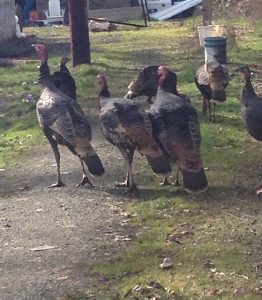
Let’s talk live turkeys first….
Wandering wild turkeys are not an uncommon sight in urban areas of Oregon, including certain neighborhoods of Corvallis and Philomath. Both comical and majestic, these birds are generally tolerated by their fellow urban dwellers. But the state Department of Fish and Wildlife stresses: Don’t feed the turkeys! If your neighborhood flock (and their you-know-what) becomes too big of a nuisance, you might want to apply for an ODFW “turkey hazing” permit. (No hassling the turkeys without one!)
Here are a few fun facts about our iconic Thanksgiving mascot from the Benton County Soil and Water Conservation District.
TALKING TURKEY: Celebrating Safely
Whether you’re planning and preparing a Thanksgiving meal for meat-eaters, vegetarians or vegans, this year’s celebration will be very different under the threat of COVID-19. Health safety guidelines from the CDC and the Oregon Health Authority advise avoiding travel, moving activities outdoors (where feasible) and limiting the number of people gathering ’round the Thanksgiving table.
TALKING TURKEY: Planning and Shopping Your Meal
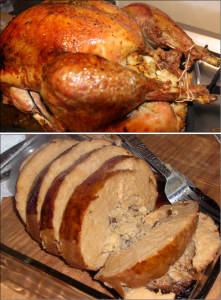
So let’s “talk turkey” about our Turkey Day logistics. That includes vegans and vegetarians who don’t eat actual turkeys! For many of us, based on what we already know about living through this pandemic, Thanksgiving 2020 may be unfolding as follows:
- A smaller dining group, which means smaller quantities of food will be needed (and potentially less wasted) compared to previous years; SO
- Your holiday Meal Plan and Shopping List may be less ambitious than in previous years; COINCIDENTALLY,
- Your holiday grocery budget may be smaller than previous years, depending on how COVID-19 has economically impacted you personally and/or your family; SO
- Your holiday Meal Plan may be based more on cooking with what you have on hand in the pantry and in your freezer (as listed on your Freezer Inventory), which you’ve been stocking and managing throughout the year; AND
- You’re already shopping strategically with Shopping Lists for those socially-distanced, in-and-out trips to the Farmer’s Market, the Co-op or other local markets, or for online grocery orders.
With our Kitchen Confessions this year, we hope we’ve helped you become familiar with these Smart Strategies (highlighted above in bold) to help you accomplish the above tasks. They’re all available in both English and Spanish from our Wasted Food Prevention Tool Box.
In addition to those at our own website, we love turning folks onto resources like these for Thanksgiving (and year-round) meal strategizing:
- Make your own turkey bone broth and/or stock: Don’t let these nourishing and valuable parts of the turkey go to waste!
- StillTasty.com, “Your Ultimate Shelf Life Guide,” for getting clear before Thanksgiving about how to handle those leftover cooked turkey pieces, that leftover gravy and those cooked giblets your kid doesn’t like;
- First Alternative Natural Foods Co-op’s “Budget Bites” – budget-minded meal plans for a week’s worth of meals for two adults;
- BigOven.com, also has meal planning and shopping lists (and tons of recipes). Upload your own recipes! (They could use a lot more vegan/vegetarian ones!)
TALKING TURKEY: Caring and Sharing
The 40th Annual Benton County Community Holiday Food Drive, in cooperation with local food pantry organizations like Linn Benton Food Share, will also be affected by this year’s pandemic. For 39 years, legions of caring volunteers assembled and delivered holiday meal food boxes throughout the county to thousands of low-income individuals and families experiencing food insecurity. These efforts are too risky this year with COVID-19.
Instead, the Food Drive is collecting only monetary donations for grocery gift cards, redeemable at the Corvallis Grocery Outlet, where recipients can shop for themselves this Thanksgiving. Food will continue to be available for distribution and pick up at Food Share’s warehouse and other local pantries, like the one in South Corvallis. All monetary donations to the Holiday Food Drive will be used to benefit Benton County residents in need, and are tax deductible.
Next week: Honoring this land and its Native peoples this Thanksgiving; Getting ready for loving those Thanksgiving leftovers!


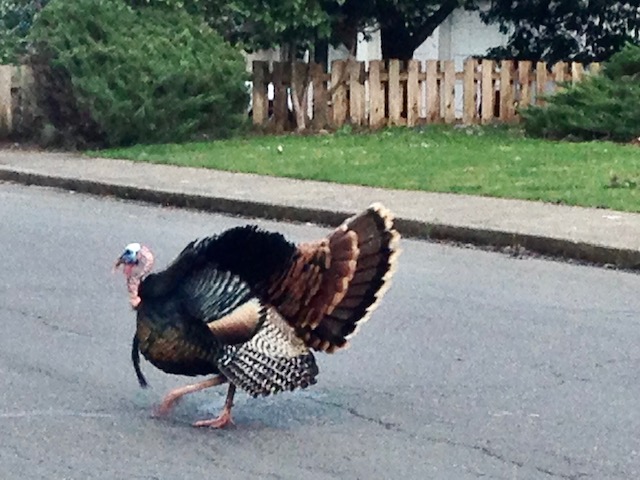
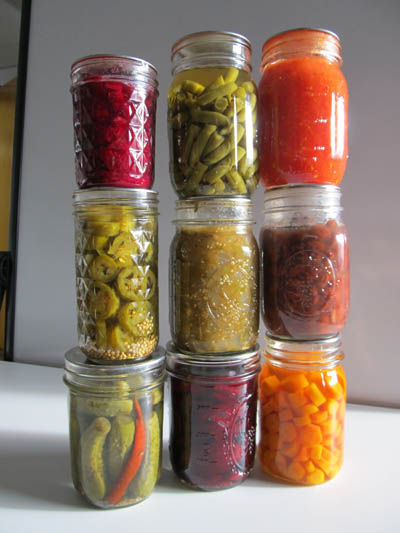
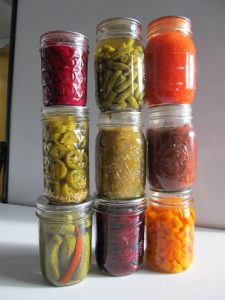 Greetings, Conscientious Food Consumers!
Greetings, Conscientious Food Consumers!
